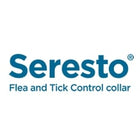
Can Cats Have Allergies?
Many people are allergic to cats, but can cats be allergic to people? While it’s rare for cats to have an allergy to humans, they can develop allergic reactions to environmental factors, food ingredients, and parasites. In most cases, cat allergies show up on their skin, leading to discomfort and irritation.
When a cat inhales allergens, absorbs them through the skin, or consumes them through food, the immune system produces antibodies. If exposed to the allergen again, an allergic reaction is triggered, causing symptoms such as excessive scratching, grooming, and skin irritation.
What is Allergic Dermatitis in Cats?
Allergic dermatitis is skin inflammation caused by allergens, leading to itchiness, redness, and irritation. This condition can result from:
- Flea allergies – A reaction to flea saliva from flea bites.
- Food allergies – Certain proteins in a cat’s diet can trigger allergies.
- Environmental allergens – Dust, pollen, mold, and household chemicals.
These allergens overstimulate the immune system, causing skin rashes, hair loss, and excessive itching.
Common Causes of Cat Skin Allergies
Identifying the exact cause of your cat’s skin allergy can take time, as there are many potential allergens, including:
✔ Environmental allergens – Pollen, dust, mold, and household cleaning products.
✔ Food ingredients – Common culprits include chicken, beef, and fish.
✔ Parasites – Fleas, mites, and lice can cause allergic reactions.
Signs of Skin Allergies in Cats
Healthy cat skin should be smooth, soft, and free from irritation. If your cat has allergic dermatitis, you may notice:
❌ Red spots, rashes, or pimples
❌ Hair loss and excessive shedding
❌ Flaky, scaly, or dry skin
❌ Crusty scabs or thickened patches
❌ Bad skin odor
❌ Excessive scratching, licking, or rubbing
If you see these symptoms, consult a vet to prevent the condition from worsening.
How Are Cat Skin Allergies Diagnosed?
Your vet will rule out other skin conditions before diagnosing allergies. The process may include:
✔ Parasite check – A visual exam or skin scraping to identify fleas, mites, or lice.
✔ Fungal infection test – A physical exam or skin culture to rule out ringworm.
✔ Food elimination trial – A special diet to determine food allergies.
✔ Allergy skin test – A test to identify environmental allergens for immunotherapy.
Your vet may recommend a 12-week elimination diet to identify the problem ingredient if food allergies are suspected.
Best Treatments for Cat Skin Allergies
The right treatment depends on the cause of your cat’s allergy. Here are common solutions:
1. Flea Allergy Treatment
- Use flea prevention treatments recommended by your vet.
- Keep your home clean to reduce flea infestations.
2. Food Allergy Treatment
- Feed a hydrolyzed protein diet for up to 12 weeks.
- Avoid known allergens like chicken, beef, or fish.
- Introduce novel proteins like rabbit, duck, or lamb gradually.
3. Environmental Allergy Treatment
- Reduce dust and mold exposure by cleaning regularly.
- Limit your cat's outdoor exposure when pollen levels are high to reduce allergy symptoms.
- Switch to fragrance-free, dust-free cat litter to avoid skin irritation.
4. Medications & Supplements
- Antihistamines & Omega-3 Fatty Acids – Help reduce inflammation and itching.
- Corticosteroids – These are used for severe allergies but have long-term risks.
- Allergy Shots (Immunotherapy) – Helps desensitize your cat to allergens over time.
Can the Right Cat Food Help?
For cats with environmental allergies, a nutrient-rich diet containing omega-6 and omega-3 fatty acids can boost immunity and promote healthier skin. Choose specially formulated cat food that supports skin and coat health for optimal results.
Final Thoughts
Treating cat skin allergies requires patience, but with the right care, your cat can find relief. Collaborate with your vet to pinpoint the allergens and implement an effective treatment plan. With consistent management, your cat can enjoy a comfortable, itch-free life.






